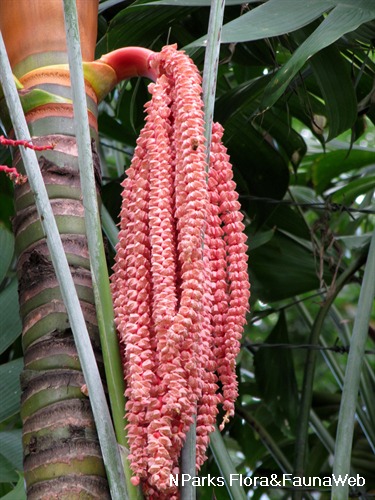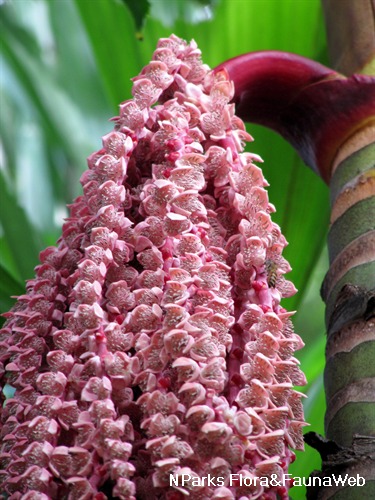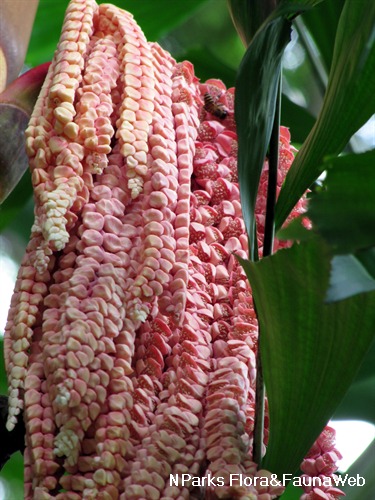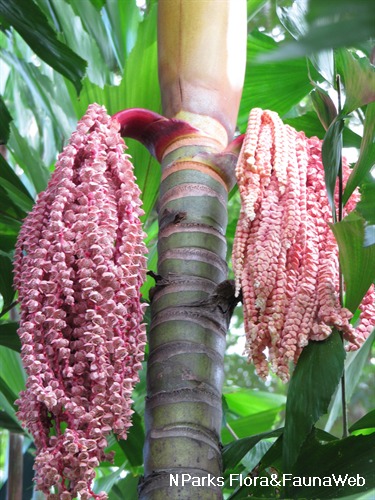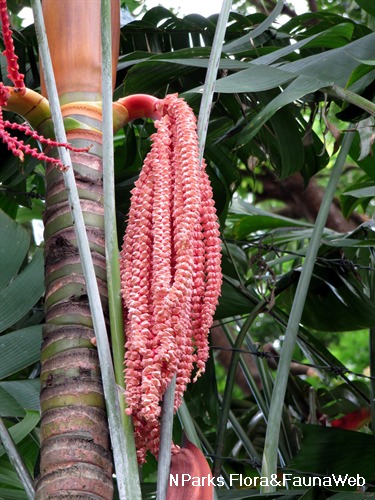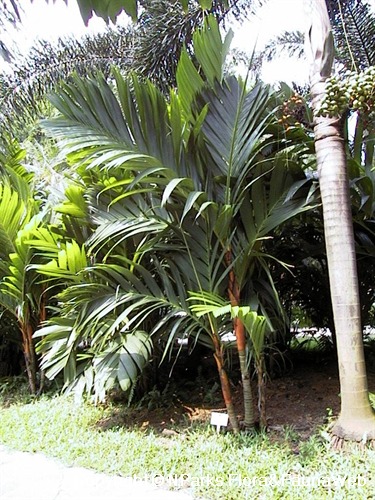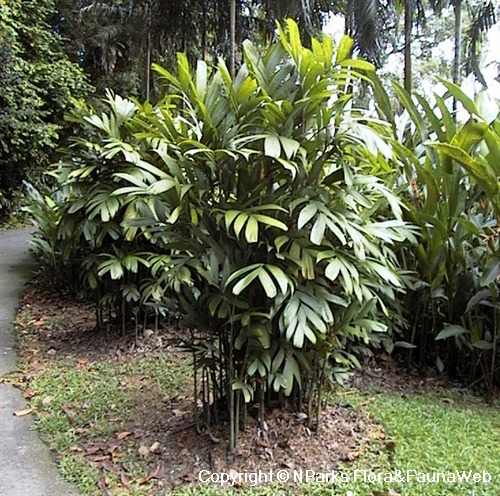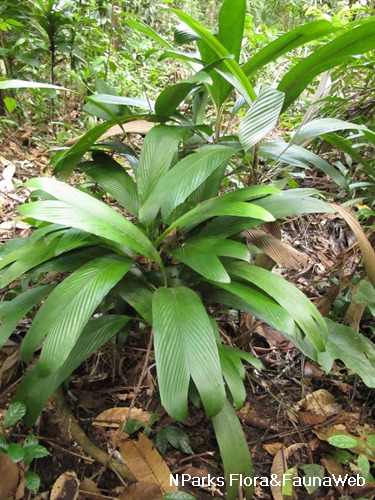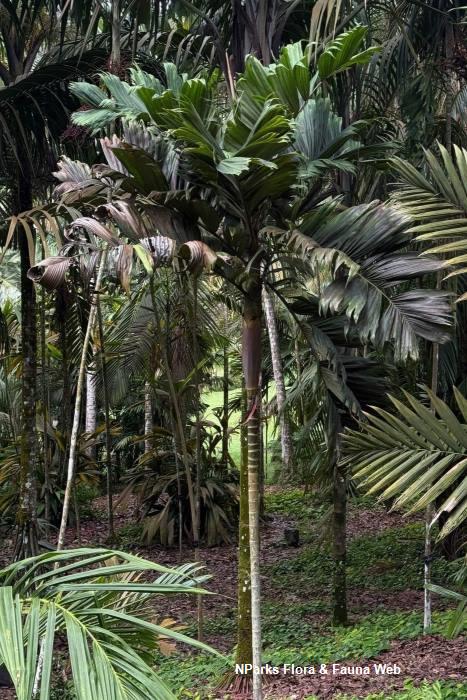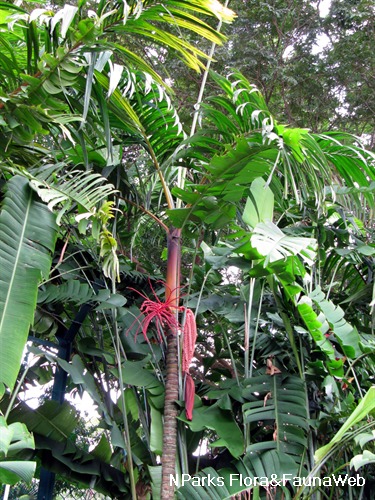
Name
Classifications and Characteristics
| Plant Growth Form | Palm (Solitary Habit) |
|---|
Description and Ethnobotany
| Growth Form | Solitary palm that grows up to 3 m tall. |
|---|---|
| Trunk | The crownshaft is reddish to red-brown. |
| Foliage | Feather-shaped (pinnate) fronds have a blue to purple stalk (rachis). |
| Flowers | Pink flowers are composed of 3 triangular, fleshy petals that curve inwards and about 20-30 black and white stamens. The flowers are densely arranged in long chains. The inflorescence resembles the the head of a mop. |
| Fruit | Fruits are approximately egg-shaped with a sharply pointed tip. Fruits are initially green, then turn yellow and finally red. |
| Habitat | This species occurs at low to moderate altitudes on the island of Sulawesi. |
| Etymology | The genus 'Pinanga' means palm in Malay. The specific epithet 'caesia' means blue-grey or lavender blue. The reference is likely to the blue to purple rachis (stalk of a compound leaf). |
Plant Care and Propagation
| Light Preference | Semi-Shade |
|---|---|
| Water Preference | Lots of Water |
| Plant Growth Rate | Moderate |
| Propagation Method | Seed, Tissue Culture |
Foliar
| Foliage Retention | Evergreen |
|---|---|
| Mature Foliage Colour(s) | Green |
| Mature Foliage Texture(s) | Glossy / Shiny |
| Foliar Type | Simple / Unifoliate |
| Foliar Attachment to Stem | Petiolate |
| Foliar Shape(s) | Palm Fronds (Pinnate / Feather) |
| Foliar Margin | Pinnately Lobed / Pinnatifid |
Non - Foliar and Storage
| Trunk Type (Palm) | Solitary Habit, Aboveground |
|---|
Floral (Angiosperm)
| Flower Colour(s) | Pink |
|---|---|
| Flower Grouping | Cluster / Inflorescence |
| Flower Symmetry | Radial |
| Individual Flower Shape | Campaulate / Bell-shaped |
Fruit, Seed and Spore
| Mature Fruit Colour(s) | Red |
|---|---|
| Mature Fruit Texture(s) | Smooth |
Image Repository
Others
| Master ID | 30249 |
|---|---|
| Species ID | 4558 |
| Flora Disclaimer | The information in this website has been compiled from reliable sources, such as reference works on medicinal plants. It is not a substitute for medical advice or treatment and NParks does not purport to provide any medical advice. Readers should always consult his/her physician before using or consuming a plant for medicinal purposes. |

